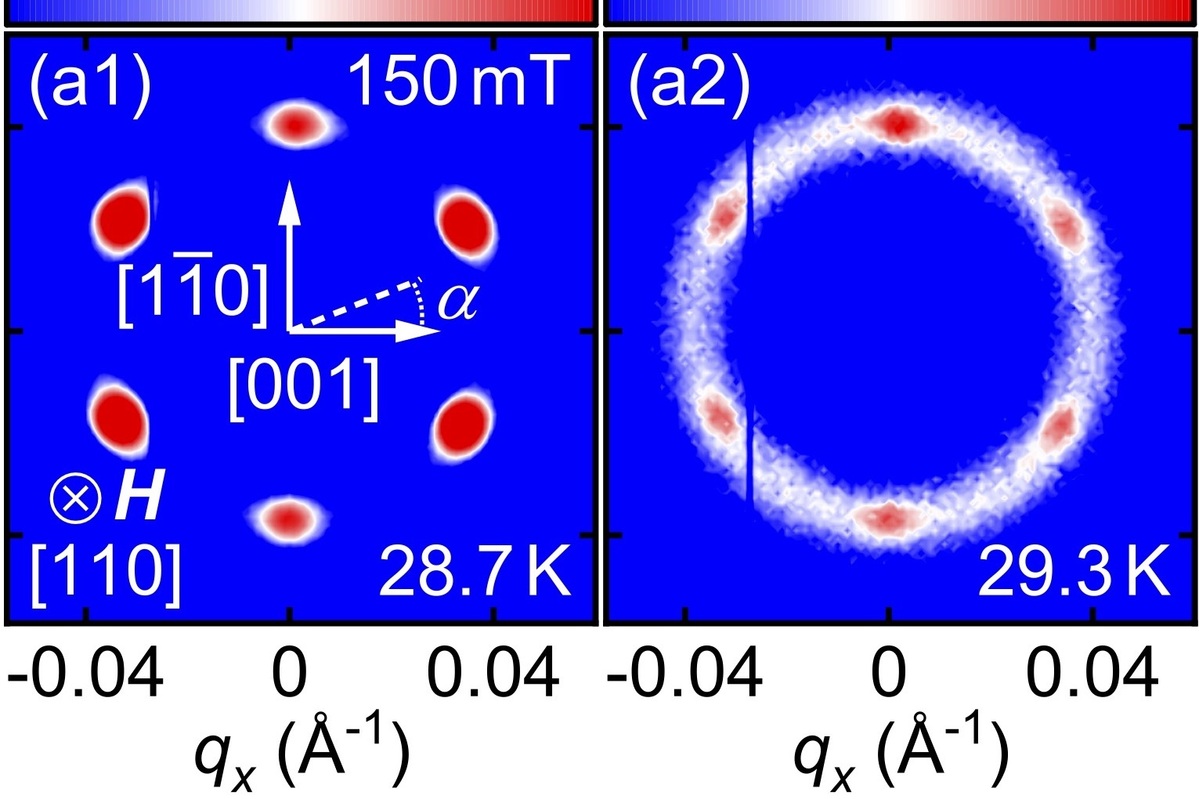Research: Weak Crystallization of Fluctuating Skyrmion Textures in MnSi
A crystal usually consists of atoms or ions that are arranged on a regular lattice. The crystal forms out of a fluid in a crystallization process when the temperature is lowered below a critical temperature. The crystallization process is often associated with a strong first-order phase transition. In certain cases, however, this phase transition is only weakly first-order or even second-order. It is then predicted by weak crystallization theory that arrangements are preferred where the constituents form equilateral triangles, for example, body-centered cubic crystals.
Effective crystals can be found in chiral magnets like MnSi where the magnetization varies spatially in a periodic manner. In particular, there exists a two-dimensional magnetic crystal that consists of a triangular lattice of skyrmions, i.e, topological textures of the magnetization that are characterized by a winding number. The skyrmion lattice is separated from the paramagnetic phase by a weak first-order transition. An important question concerns the nature of this phase transition: does the skyrmion lattice suddenly appear out of the paramagnetic phase? Or do the skyrmions preform and subsequently crystallize into a lattice? Researchers from our institute in collaboration with the experimental group of Prof. C. Pfleiderer from the TU Munich shed light on this question. Evidence for triangular correlations in the paramagnetic phase were found in neutron scattering experiments indicating a preformation of skyrmions.

